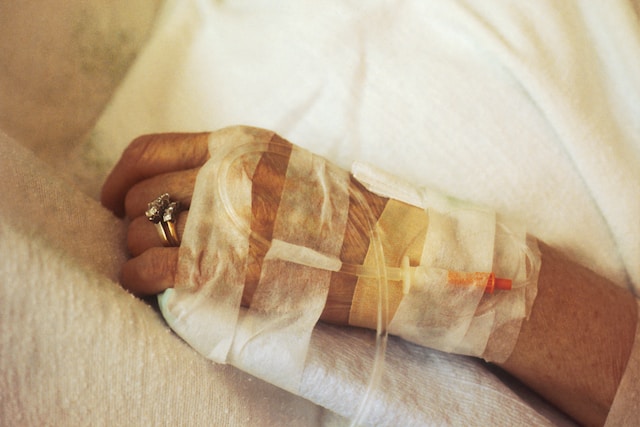Ever looked at your skin and found strange, painful blisters forming out of nowhere? That could be blisterata. Though not a household term just yet, it’s making waves in dermatology circles. Simply put, blisterata is a rare skin condition characterized by sudden outbreaks of fluid-filled blisters. These blisters can be itchy, painful, or even leave scars if untreated.
🚨 Why Is Blisterata Gaining Attention Now?
With the rise of autoimmune disorders and increasing environmental allergies, blisterata is showing up more frequently in dermatological clinics. The pandemic lifestyle and stress are only fueling the fire. So, no – it’s not just a trending TikTok term; it’s a real issue.
🧪 Causes and Risk Factors
⚡ Common Triggers of Blisterata
Blisterata isn’t just “bad luck.” There’s often a trigger involved:
🌿 Allergic Reactions
Your skincare routine might be betraying you. New lotions, perfumes, or even laundry detergents can spark blisterata if you’re allergic.
🦠 Infections
Some viral or bacterial infections, like herpes simplex or impetigo, can lead to blister formation.
🧬 Autoimmune Disorders
In some cases, the body turns against itself, attacking skin cells and causing blisters. Conditions like pemphigus and bullous pemphigoid fall into this category.
🧏 Is Blisterata Contagious?
Nope. Blisterata isn’t contagious. It’s not something you can catch like a cold, though if caused by an infection like herpes, that underlying condition might be.
🔍 Symptoms of Blisterata
👁️ How to Recognize the Early Signs
Blisterata often starts subtly – maybe a tingling sensation or redness in one area. Before you know it, blisters start bubbling up like water on a hot stove.
💥 Mild vs. Severe Symptoms
💧 Fluid-Filled Blisters
These are the hallmark sign – clear or yellowish blisters that may pop and scab over.
🔥 Redness and Irritation
Sometimes the skin around the blister looks inflamed and feels hot.
⚡ Pain or Burning Sensations
In severe cases, the area may throb or burn, making daily activities difficult.
🩺 Diagnosing Blisterata
👨⚕️ Clinical Examination
A dermatologist will first visually inspect the skin. In most cases, they can identify blisterata on sight.
🧫 Lab Tests and Biopsy
If things aren’t clear-cut, a skin biopsy or fluid sample might be taken to rule out other conditions.
🔄 Differential Diagnosis
Doctors will ensure it’s not eczema, herpes, or dermatitis herpetiformis, which can appear similar at first glance.
💊 Treatment Options
🧴 Topical Medications
Mild cases often respond well to corticosteroid creams or antihistamine gels.
💊 Oral Medications
In more serious situations, oral steroids, antibiotics, or antivirals may be necessary.
🌱 Natural Remedies
🍃 Aloe Vera
A classic! Its soothing and anti-inflammatory properties can ease discomfort.
🛁 Oatmeal Baths
Helps reduce itching and swelling. A simple remedy with solid science behind it.
🌼 Herbal Creams
Chamomile or calendula creams can soothe the skin and help reduce blister formation.
🛡️ Preventing Blisterata
💆 Skin Care Tips
-
Use fragrance-free products
-
Avoid hot showers
-
Always moisturize after bathing
🚫 Avoiding Known Triggers
If you’ve identified a specific soap, food, or climate that causes flare-ups – ditch it.
💪 Building Skin Resilience
A healthy diet, hydration, and vitamin E can work wonders for your skin’s defense system.
🧠 Living With Blisterata
💔 Emotional and Psychological Impact
Chronic skin issues can be draining. It’s not just the itch – it’s the stares, the questions, the insecurity.
👥 Support Groups and Communities
You’re not alone. Online forums and local support groups can offer guidance, comfort, and tips.
🛠️ Coping Strategies
-
Meditate
-
Try journaling
-
Wear breathable clothing to avoid irritation
🔍 Myths and Misconceptions
“It’s Just a Rash”
Nope. Blisterata is deeper than your average rash and needs proper treatment.
“You Can Pop the Blisters”
Big no-no! Popping increases the risk of infection and scarring.
“It’s a Sign of Poor Hygiene”
Absolutely not. Blisterata often has nothing to do with cleanliness.
👶 Blisterata in Different Age Groups
👼 Children
Blisterata in kids can be tricky, often misdiagnosed as chickenpox or eczema.
🧑 Adults
In adults, it might appear due to stress or allergens. Hormonal shifts play a role too.
👵 Elderly
Older folks with thinner skin are at higher risk for severe outbreaks and infections.
📅 When to See a Doctor
🚨 Warning Signs
-
Fever with blisters
-
Blisters spreading quickly
-
Painful, infected-looking sores
📉 Chronic vs. Acute Blisterata
If your blisters come and go or stay for weeks, it’s time for professional help.
⚖️ Blisterata vs. Other Skin Conditions
🆚 Eczema
Eczema is itchy, dry, and flaky. Blisterata has visible, fluid-filled sacs.
🆚 Psoriasis
Psoriasis causes silver scales – not blisters.
🆚 Dermatitis Herpetiformis
This one can be confused with blisterata but is directly linked to gluten sensitivity.
🧬 Research and Advances
🧠 Latest Studies
Recent studies are exploring the role of immune suppression and microbiome health in treating blisterata.
🚀 Innovative Treatments on the Horizon
Gene therapy, smart bandages, and nanotech creams are being researched to better target blister-prone areas.
🧾 Conclusion
Blisterata may sound exotic, but for those living with it, it’s an all-too-real struggle. From red, painful blisters to the emotional toll it takes – it’s a condition that deserves more awareness, compassion, and research. Whether you’re experiencing symptoms yourself or supporting someone who is, remember: blisterata is manageable, and help is out there. Start with self-care, seek professional advice, and never underestimate the power of community.
❓FAQs
1. Is blisterata a lifelong condition?
Not always. Some cases resolve with treatment, while others may become chronic. It varies from person to person.
2. Can diet affect blisterata?
Yes. Anti-inflammatory foods and avoiding allergens like gluten or dairy may help reduce flare-ups.
3. Are there specific seasons when blisterata worsens?
Hot and humid weather often makes symptoms worse, but for some, cold dry air is the culprit.
4. Can stress trigger blisterata?
Definitely. Emotional stress is a well-known trigger for many skin conditions, including blisterata.
5. Is there a cure for blisterata?
There’s no universal cure, but with the right treatment plan, most people manage it effectively.


